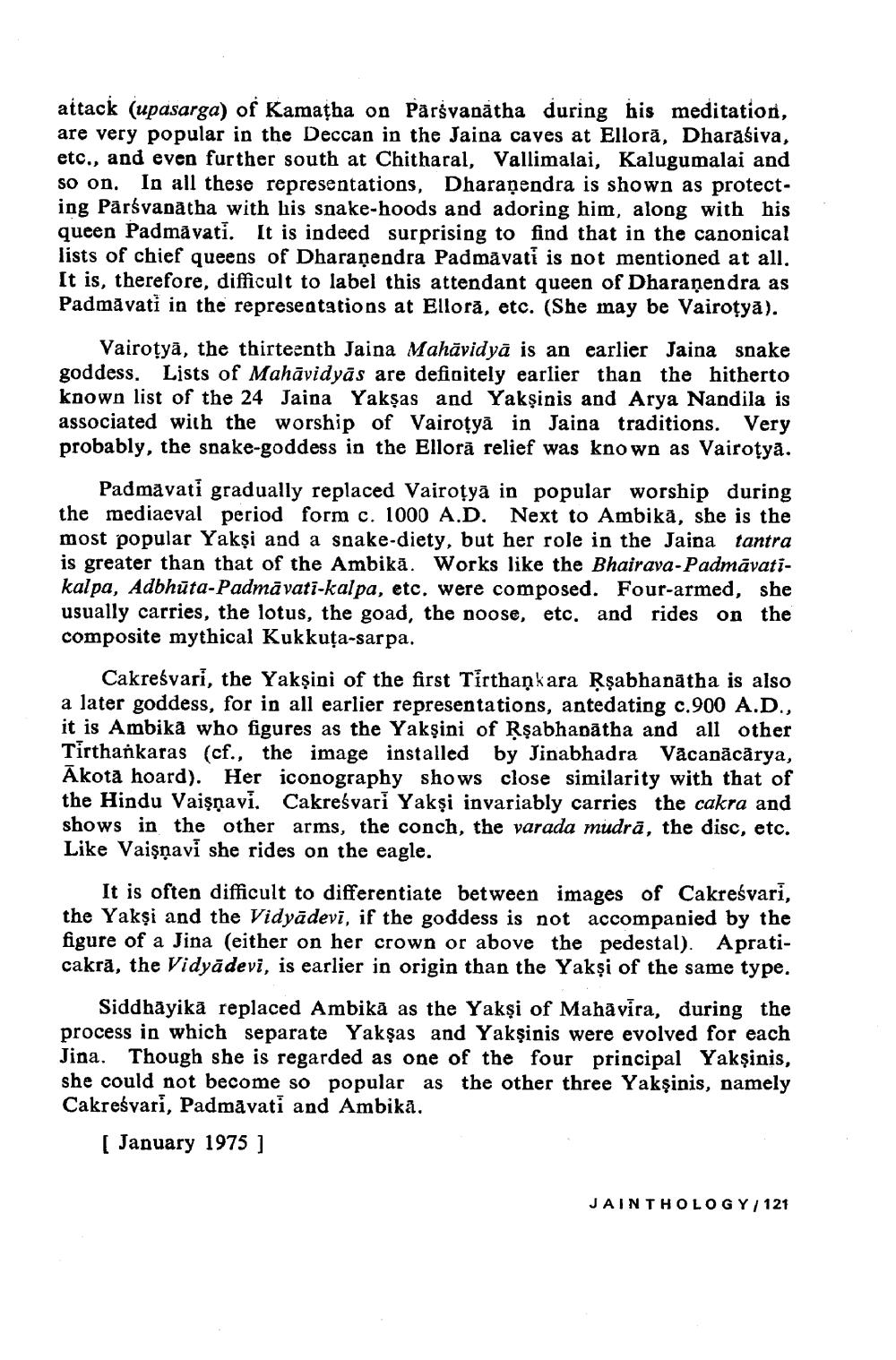________________
attack (upasarga) of Kamatha on Parsvanatha during his meditation, are very popular in the Deccan in the Jaina caves at Ellora, Dharaśiva, etc., and even further south at Chitharal, Vallimalai, Kalugumalai and so on. In all these representations, Dharanendra is shown as protecting Parsvanatha with his snake-hoods and adoring him, along with his queen Padmavati. It is indeed surprising to find that in the canonical lists of chief queens of Dharanendra Padmavati is not mentioned at all. It is, therefore, difficult to label this attendant queen of Dharanendra as Padmavati in the representations at Ellora, etc. (She may be Vairotyā).
Vairotya, the thirteenth Jaina Mahavidya is an earlier Jaina snake goddess. Lists of Mahavidyās are definitely earlier than the hitherto known list of the 24 Jaina Yakṣas and Yakṣinis and Arya Nandila is associated with the worship of Vairotya in Jaina traditions. Very probably, the snake-goddess in the Ellora relief was known as Vairotya.
Padmavati gradually replaced Vairotya in popular worship during the mediaeval period form c. 1000 A.D. Next to Ambika, she is the most popular Yakṣi and a snake-diety, but her role in the Jaina tantra is greater than that of the Ambika. Works like the Bhairava-Padmāvatikalpa, Adbhūta-Padmavati-kalpa, etc. were composed. Four-armed, she usually carries, the lotus, the goad, the noose, etc. and rides on the composite mythical Kukkuta-sarpa.
Cakreśvari, the Yakşini of the first Tirthankara Rṣabhanatha is also a later goddess, for in all earlier representations, antedating c.900 A.D., it is Ambika who figures as the Yakşini of Rṣabhanatha and all other Tirthankaras (cf., the image installed by Jinabhadra Vacanācārya, Akota hoard). Her iconography shows close similarity with that of the Hindu Vaisnavi. Cakreśvari Yakşi invariably carries the cakra and shows in the other arms, the conch, the varada mudra, the disc, etc. Like Vaisnavi she rides on the eagle.
It is often difficult to differentiate between images of Cakreśvari, the Yakşi and the Vidyadevi, if the goddess is not accompanied by the figure of a Jina (either on her crown or above the pedestal). Apraticakra, the Vidyadevi, is earlier in origin than the Yakşi of the same type.
Siddhayikā replaced Ambika as the Yakṣi of Mahavira, during the process in which separate Yaksas and Yakşinis were evolved for each Jina. Though she is regarded as one of the four principal Yakşinis, she could not become so popular as the other three Yakşinis, namely Cakreśvari, Padmavati and Ambikā.
[ January 1975 ]
JAINTHOLOGY/ 121




